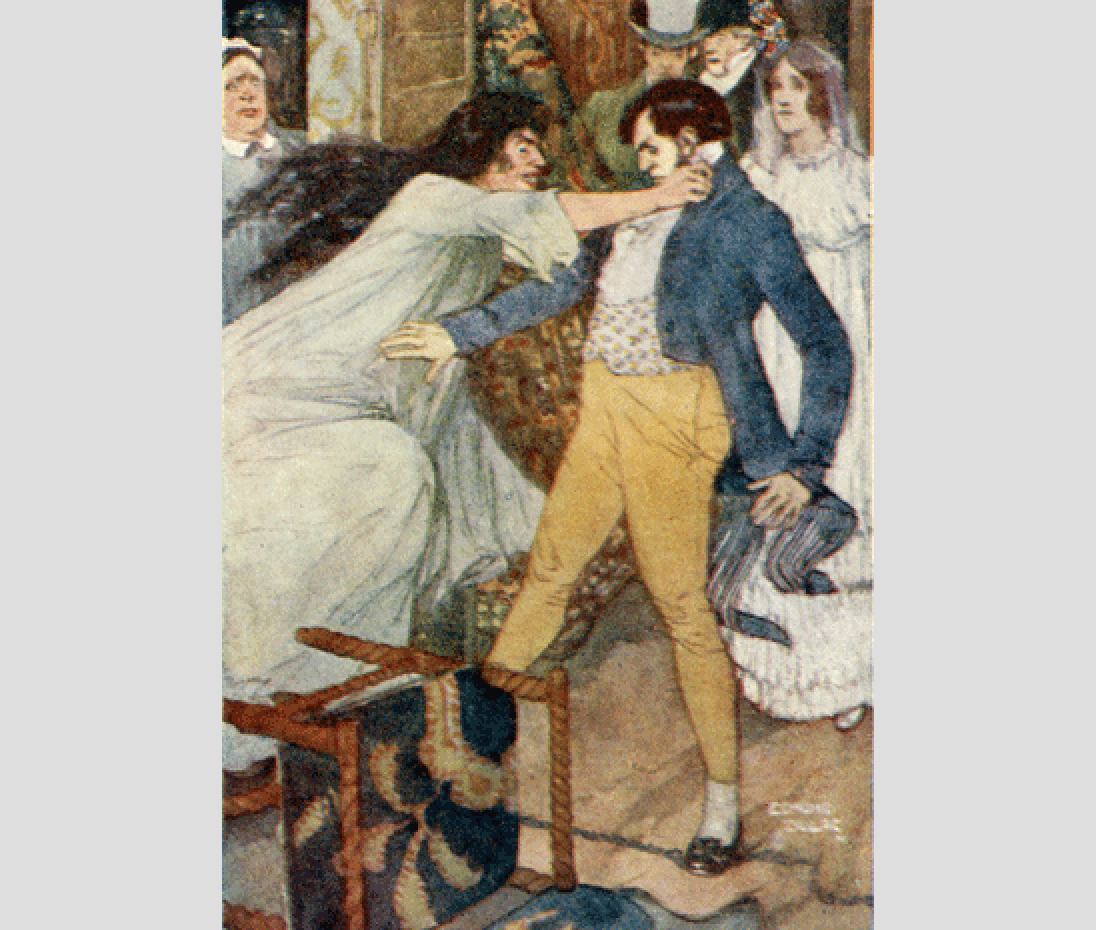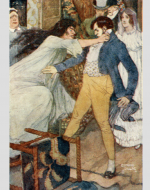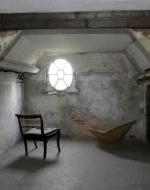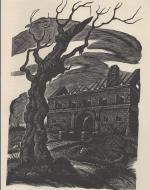Created by Ellen Turpin on Tue, 11/17/2020 - 11:41
Description:
Case Description:
Edmund Dulac, "Bertha Attacking Rochester," Jane Eyre, Dent edition of Novels of the Brontës, 1905
This is a depiction of a scene in Jane Eyre in which Jane and Rochester's wedding is interrupted by news that Rochester already has a wife, Bertha, that he has locked in the attic of Thornfield. In this particular scene, Rochester has lea Jane and Mr. Mason up to the attic to justify holding his wife hostage due to her "madness", saying, "I invite you all to come up to the house and visit Ms. Poole's patient, and my wife! You shall see what sort of a being I was cheated into espousing, and judge whether or not I had a right to break the compact, and seek sympathy with something at least human." (Brontë, 262) In this image, Bertha is depicted as promised, a savage "being", while Jane appears prim and proper, still in her wedding attire. Dressed up in her white dress and veil, Jane here can represent the pure and naive view of a newlywed looking upon her soon to be husband's altercation with his previous wife, a grim exchange between longtime spouses that could represent a more cynical view of marriage, specifically what it's implications are for the wife. James Hammerton in his essay, “Victorian Marriage and the Law of Matrimonial Cruelty”, states of marriage in the Victorian Era, “A strict law of patriarchal supremacy was regularly upheld as the central principle governing marital relations. In effect these homilies constituted a working judicial definition of patriarchy, emphasizing the ultimate benevolent sovereignty of husbands and humble submission of wives” (Hammerton, 274), which shows the unequal nature of marriage in the Victorian Era which women were trapped by gender roles and unable to express free will, much like the physical attic Bertha is trapped in throughout the novel.
"Mad Woman's Room" Courtesy of Norton Conyers, 2017
This image is a room from a historic house in Yorkshire, reportedly the attic room that served as Charlotte Brontë's inspiration for Bertha's attic. The estate itself is called Norton Conyers and was originally owned by Sir James and Lady Graham in 1684. In this account by Francesca Hobson she states, "in 1839 it is said that Brontë visited the medieval manor, marveling at the ‘stately and elegant, gloomy and haunting’ house (the novel’s description). Her visit left her feeling inspired when she was told of the tale of a madwoman who resided in the attic... Brontë grabbed hold of this tale and spun her own story from the legend, crafting the deranged Bertha Mason." (Hobson, 2) It is incredibly interesting to view the inspiration for Charlotte's work beyond her family and childhood and see the actual estate Thornfield was based on, especially the attic which eventually became Bertha's famous attic. This photo of the attic is credited to "Norton Conyers", so while we know the photograph was taken by one of the owners, we do not know exactly who is responsible for this image.
Fritz Eichenberg, "After the Thornfield Fire," Jane Eyre, Random House edition, 1943.
This image depicts Thornfield Hall after Bertha sets fire to the attic at the end of Jane Eyre. As we can see, the entire top level of the house is bare without Bertha's life contained by it. After the top-level is burned away, Bertha's essence and memory seemingly fade along with it as only after this event does Jane return to Thornfield and marry Rochester. Jane, for most of the novel, is an unmarried and free woman able to experience life in many settings from Gateshead, to Lowood, to Thornfield, each location giving her a different perspective on life and new opportunities to grow. Bertha, however, as a married woman, was confined to Thornfield's attic the entire novel, unable to grow, change, or make any decisions of her own until the time of her death.




